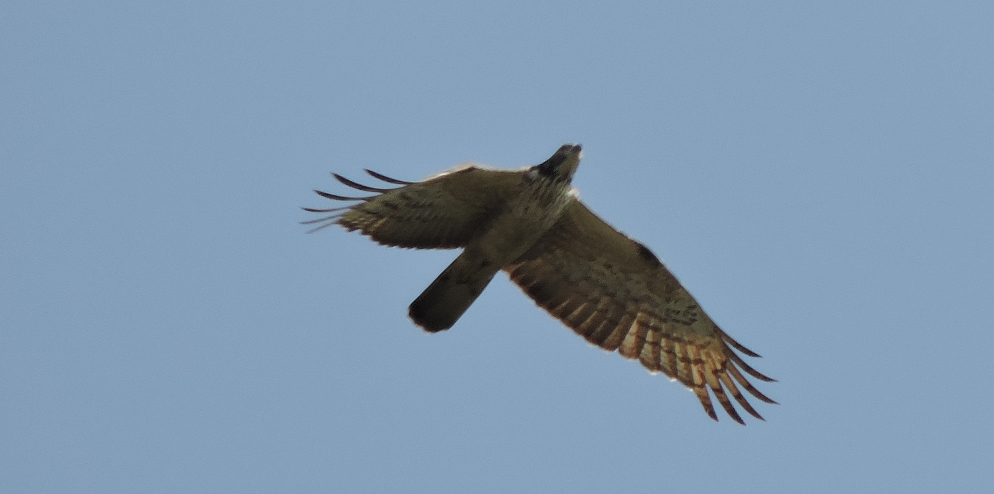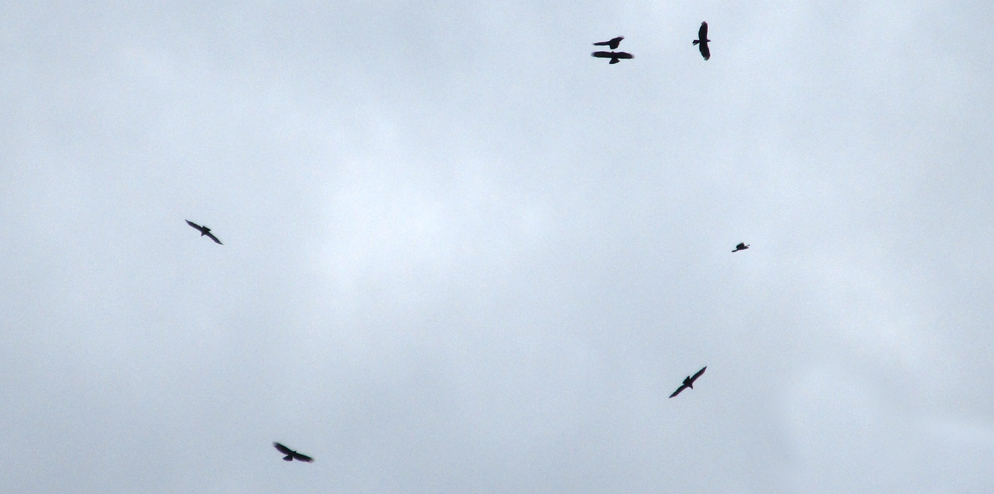October 28, 2016
In early October, the Restorasi Ekosistem Riau (RER) team monitored raptors travelling between their summer feeding grounds in northern Asia or Russia over to parts of Indonesia and Malaysia, its over-wintering grounds. This is to identify the dependency and abundance of migratory bird species utilizing the peat forest habitat in Kampar Peninsula.
The raptors pass through twice a year, in spring and fall, in varying numbers. The team at Restorasi Ekosistem Riau (RER) is the first to monitor and document the migratory surveys in the Kampar Peninsula. Monitoring the travels of these birds is a popular twice annual event in Tanjung Tuan, Port Dickson, Malaysia where people observe and count the birds crossing Malacca Straits.
After spotting dozens of raptors in early October, RER’s Forest Ecology and Rehabilitation Manager, Muhammad Iqbal, organized this year’s raptor watch team.
It was a normal day out in the field. While driving past Serkap bridge, I spotted a low-flying eagle and stopped the car to see if there are more. Soon after we got out, we counted 13 Oriental Honey Buzzards flying in low altitude while about 10 more were soaring high Southward. We concluded the raptor migration has started and planned a migratory survey for the following week. The Oriental Honey Buzzard (Pernis ptilorhynchus) is a bird of prey with an un-raptor-like facial appearance due to the lack of a prominent brow ridge, with a long tail and short head crest. This raptor breeds in Asia, from Central Siberia to East of Japan. It is a summer migrant to Siberia and winters in Southeast Asia.

It had been raining heavily since before dawn which does not make for an ideal day for raptor survey. I started the day late as raptors will not fly high under the rain. As I was driving, I saw the Changeable hawk-eagle (Nisaetus cirrhatus), a medium-large raptor, perching on a Ramin tree. This hawk-eagle breeds in the Indian sub-continent, mainly India and Sri Lanka, and from the Southeast rim of the Himalaya across Southeast Asia to Indonesia and the Philippines.
After we passed the Serkap bridge, one Oriental Honey Buzzard was slowly flapping to the South. The bleak weather provided no thermal column it needed to soar. Driving back, hoping for better weather conditions tomorrow, I saw the same Changeable hawk-eagle still perching on the same tree.
It was a bright morning when I gathered the team to continue the raptor watch. By mid-morning, amid an increasingly cloudy sky, we spotted the Black Baza (Aviceda leuphotes), a small-sized bird of prey, commonly found in forests across South Asia and Southeast Asia. A prominent crest is a feature of the Bazas, during migration, they are gregarious at their roost and seem to be more active at dusk and in overcast weather.
Soon, a group of 10 Oriental Honey Buzzards was seen flying at low altitude and a total of 107 raptors were counted by the end of they day.

We’re encouraged to see the raptors at the RER site in Kampar Peninsula as it indicates a healthy forest condition and brings hope to the long-term protection and restoration work the RER program is working toward. Healthy forests provide food, water, and resting areas for the migratory birds that contributes to the flocks’ health and population during the migratory period.
Launched in 2013, the total restoration area under RER covers 150,000 hectares of ecologically important peat forest in Kampar Peninsula and Padang island.